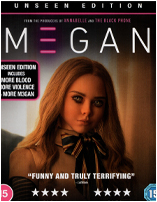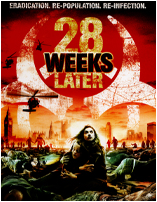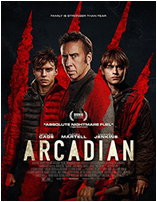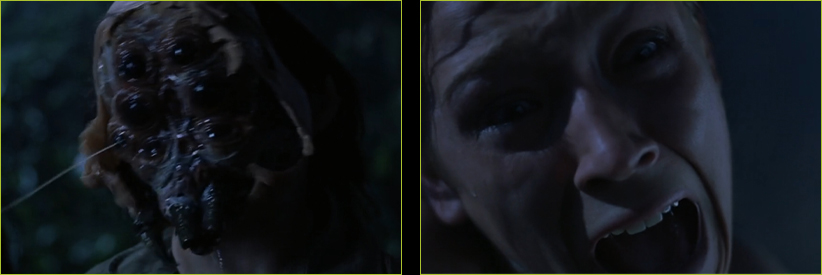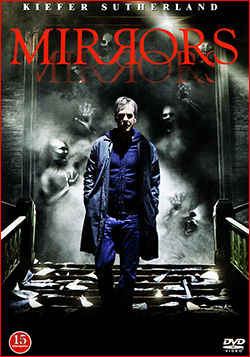 Arkin O´Brien is a handyman who is working for the Chase family. He’s a former convict, and his wife is in debt to loan sharks who wants to get paid due by midnight. Arkin then desperately makes a plan: he decides to steal a valuable ruby from the Chase home. After all, the family was going on a vacation so the house would be empty, so this would be like stealing candy from a baby, right? No such luck, though. While there, he finds that someone else got there before him, and they’re not after the ruby or any other valuables…he sees the father of the family getting dragged down into the basement by a masked man. Not only that, but when Arkin tries to call 911, he discovers that the entire house has been booby-trapped and rigged with all kinds of deadly devices. Even the windows have been boarded up and lined with razors. When he finds out that the entire Chase family has been captured by this masked madman, he discovers that the little girl of the family has been able to hide. He decides to try and save her, despite feeling like a fly trapped in a spider’s dangerous net.
Arkin O´Brien is a handyman who is working for the Chase family. He’s a former convict, and his wife is in debt to loan sharks who wants to get paid due by midnight. Arkin then desperately makes a plan: he decides to steal a valuable ruby from the Chase home. After all, the family was going on a vacation so the house would be empty, so this would be like stealing candy from a baby, right? No such luck, though. While there, he finds that someone else got there before him, and they’re not after the ruby or any other valuables…he sees the father of the family getting dragged down into the basement by a masked man. Not only that, but when Arkin tries to call 911, he discovers that the entire house has been booby-trapped and rigged with all kinds of deadly devices. Even the windows have been boarded up and lined with razors. When he finds out that the entire Chase family has been captured by this masked madman, he discovers that the little girl of the family has been able to hide. He decides to try and save her, despite feeling like a fly trapped in a spider’s dangerous net.
The Collector is a horror film from 2009, written by Patrick Melton and Marcus Dunstan, and directed by Dunstan. The original script was titled The Midnight Man, and was actually at one point considered a spin-off prequel to the Saw franchise as some kind of origin story of Jigsaw. Fortunately, as this movie stands very well on its own, this idea was dismissed by the producers and the script was re-written into an original story.
Despite the re-write of the script, the Saw/Jigsaw-esque traps are very prominent throughout the movie, and they are always sadistic and inventive. I also find the spider-like appearance and antics of the masked man to be quite enjoyable, making him stand out a bit from the all too generic slasher/serial killer villain by giving him some features of his very own. His victims are trapped in his spiderweb, so to speak, and you just gotta admire how the guy manages to put the most elaborate traps all over the place in no time. It’s like Kevin from Home Alone grew up to be a serial killer.
The kills are brutal and gory, delivering plenty of graphic moments. The serial killer comes off as mysterious and pretty creepy, with no background story or any actual motive or reasoning behind what he does. We do realize there is some kind of fascination towards bugs or especially spiders (there are also several spider shots throughout the film), and the black glowing contact lenses he appears to be using which makes his face appear more bug-like. He “collects“ one from each of his killing sprees, but for what reason, we can (at least for now) just speculate. In this movie the character was played by Juan Fernández.
While The Collector is, overall, a pretty fun time, you can’t really help but noticing a few puzzling and nonsensical things regarding the killer. Why take everything to such great lengths by booby-trapping the entire home, when he’d already captured the family and had them tied up? It wasn’t like he expected any visitors. Not to mention how fast he could put up all those traps…but hey, all of that is nitpicking for a movie that doesn’t really take itself all too serious to begin with. It is a fun home invasion/serial killer thriller, with a bit of Saw meets Home Alone.

Director: Marcus Dunstan
Writers: Patrick Melton, Marcus Dunstan
Country & year: USA, 2009
Actors: William Prael, Diane Ayala Goldner, Juan Fernández, Josh Stewart, Michael Reilly Burke, Andrea Roth, Karley Scott Collins, Madeline Zima, Haley Pullos, Daniella Alonso
IMDb: https://www.imdb.com/title/tt0844479/
Sequel: The Collection (2012)
![]()









